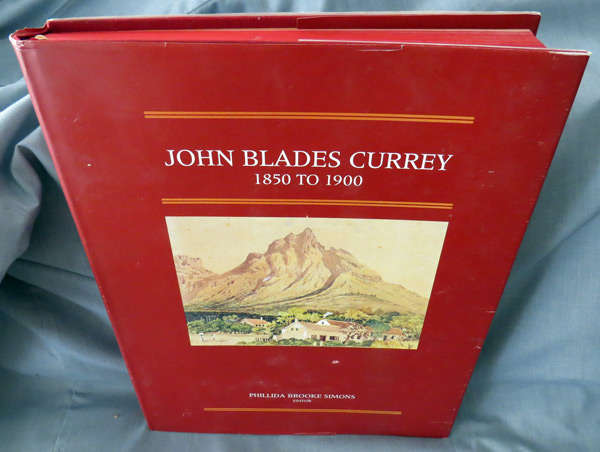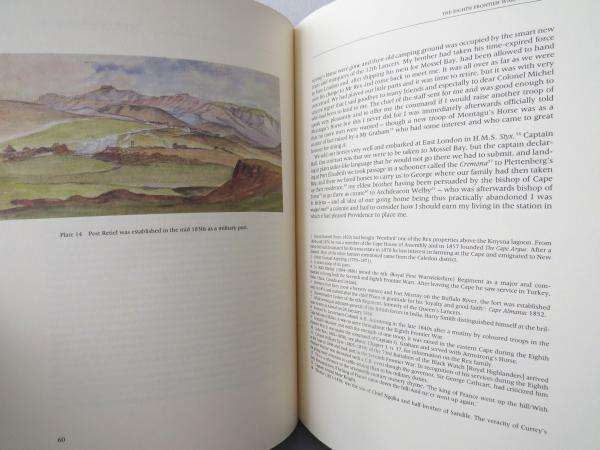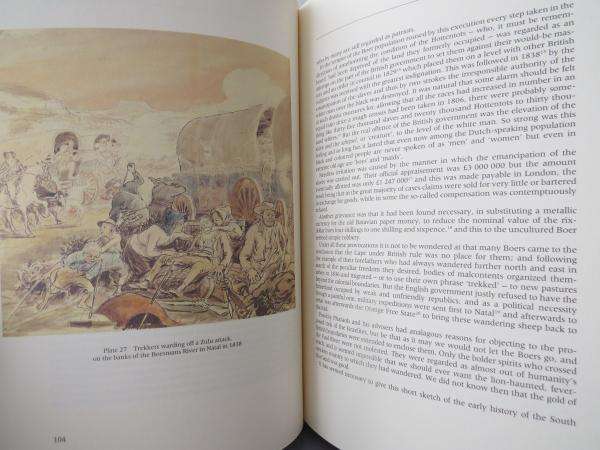









John Blades Currey 1850 to 1900 - Phillida Brooke Simons (editor) (Brenthurst)
Check my rate
| Main centres: | 1-3 business days |
| Regional areas: | 3-4 business days |
| Remote areas: | 3-5 business days |










| Main centres: | 1-3 business days |
| Regional areas: | 3-4 business days |
| Remote areas: | 3-5 business days |
Condition: DJ - few small marks on the front, light wear on some corners. Book - dark red cloth boards in great shape, content clean and tidy, binding great.
Format: Large Hardcover with DJ
Published: 1986 (The Brenthurst Press)
Pages: 275
ISBN: 0909079307
The name of John Blades Currey (1829 -1904) is seldom mentioned in histories of southern Africa. Indeed, the young Englishman who arrived at the Cape in 1850 made little direct impact on its story. He was nonetheless to become a profound influence on some of the Capes most famous men and an astute chronicler of the political and social events of his time.
His memoirs, published here for the first time, cover half a century of Cape history, from 1850 to 1900. Soldiering, farming, copper-mining - Currey tried all these; then, on the advice of governor Sir George Grey he joined the Cape civil service. While in its employ in the late 1860s he was entrusted with the task of introducing to a sceptical Europe southern Africas first diamond, the Eureka. Later, as secretary to the government of Griqualand West, he chose the new name of Kimberley for the burgeoning diamond-fields town of New Rush.
But in 1875 Currey was blamed for the diggers rebellion there, and this led to his dismissal from office and blighted his subsequent public career. While he was in Kimberley Currey befriended two young fortune-hunters, both of whom were to become renowned premiers of the Cape: Cecil John Rhodes and John X. Merriman.
To both of them Currey was to remain a lifelong friend and counsellor. In 1884 Currey was appointed manager of a Kimberley land-owning company and when, some fifteen years later, it was absorbed by De Beers Consolidated Mines, Rhodes as chairman of De Beers offered him the stewardship of the Groote Schuur Estate in Cape Town.
Currey was to live in Welgelegen, in the grounds of the Estate, and it was while waiting to move into this new home that Currey wrote his memoirs. He is revealed in the account not as a politician but as a man who helped to shape politicians, not as a man who made history but rather as one who was passionately part of it. The manuscript forms pan of The Brenthurst Collection, as do the majority of the contemporary illustrations which complement the text.